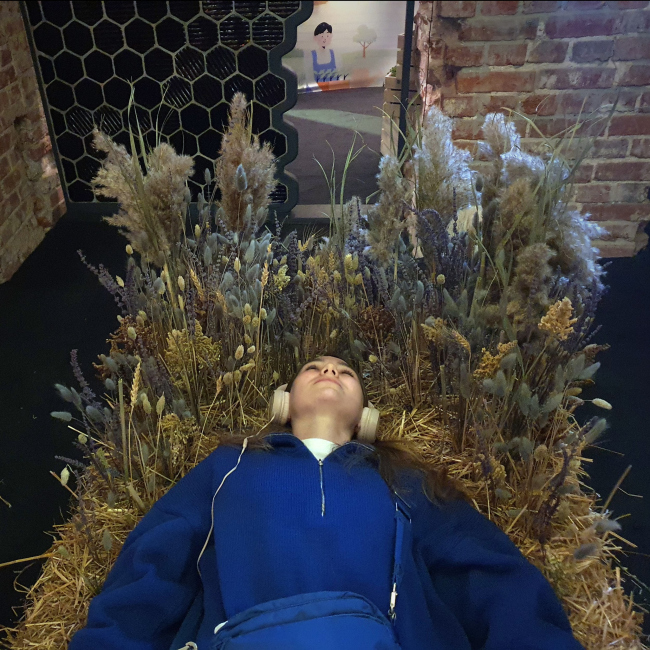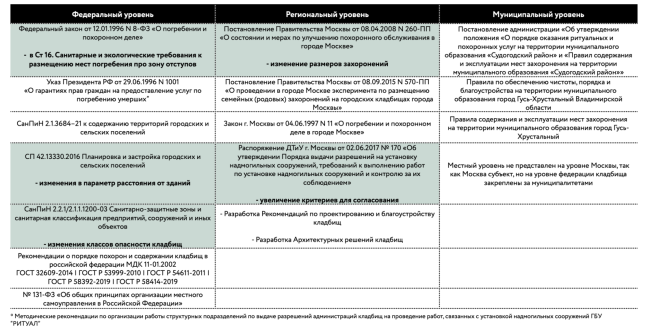|
Published on Archi.ru (https://archi.ru) |
|
| 17.11.2023 | |
|
The Cemetery: Inside and Outside |
|
|
Julia Tarabarina |
|
| Studio: | |
| Genplan Institute of Moscow | |
|
The workshop organized by the Genplan Institute of Moscow scored one of the two first places at the “Open City” festival. Its subject is reorganization of municipal cemeteries. Two action plans were proposed, diametrically opposite: one for the downtown and one for the suburbs. The project of the “Open City” workshop, created by a team working under the guidance of Genplan Institute of Moscow, was recently announced as one of the two winners of the festival. Its authors will be premiered with an expenses-paid participation in Kazanysh festival in Kazan. “Open City” 2023Copyright: Photograph © Julia Tarabarina, Archi.ruFirst, the project is presented at the exhibition with a meditative installation in the form of a bed made of hay, where you can lie down, relax, and listen to music. Second, the project itself begins with a research of the relevance of reforming cemeteries as such – their number, their specifics, and growth trends – among other things, we find out that in Moscow and New Moscow combined cemeteries occupy 2017 hectares, 641 of them lying within the Moscow Ring Road. We also learn that the nation’s capital buries an average of 345 people a day, which within a year adds up to a territory roughly equivalent to two Zaryadye parks. Another thing that we learn is that the cemetery design is chaotic to the point of being repulsive, and this is something that I 100% agree with – because once you come to a cemetery, the first thing you want is to get out of there. Another random fact: cremation cuts down the burial area by about a hundred times. Still another random fact: the largest number of cremations falls on Norilsk, followed by Novosibirsk and Novomoskovsk; cremation and conventional burying are split by 50% in Ekaterinburg and St. Petersburg, Moscow clearly prefers the conservative method, and there is even a city with zero cremations – it is Rostov-on-Don. 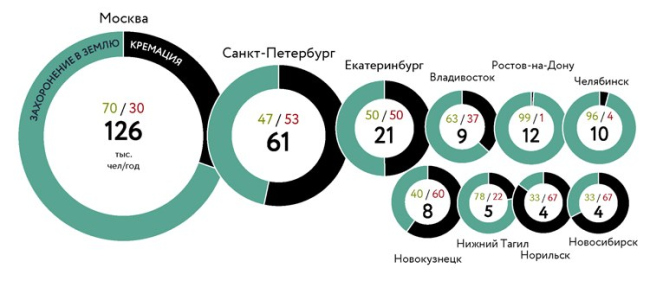 Statistics on traditional burials and cremations by city. Quiet Neighbors WorkshopCopyright: Materials of the workshop of the “Open City Festival”, curated by the Genplan Institute of MoscowMeanwhile, the authors of the report not just provide stats, prove relevance, and showcase their projects – they also developed recommendations for optimizing the legal base: sanitary regulations, federal standards, and the operation of Ritual (“The Last Rites”) bureau. This means that the workshop “Lighting Inclusion” is not the only one who developed this manual. And, since we are talking about the Genplan Institute of Moscow here, then I can safely define the prospects of implementing the recommendations as optimistic ones. In a word, this is a great initiative. “Quiet Neighbors” WorkshopCopyright: Materials of the workshop of the “Open City Festival”, curated by the Genplan Institute of MoscowWorkshop participants: Luisa Karimova, Tatiana Magon (Genplan Institute of Moscow), Nikolai Potapenko, Anna Potapenko, Darius Nazarov, Iya Viktorova (MARKHI), Ekaterina Sokolova (HSE), Anna Belashova (MARCH), Maria Nakadovskaya (GUZ) Workshop curators: Vitaly Lutz, Irina Lobanova (Genplan Institute of Moscow), Anna Antokhina (Lug Architects) Another feature of the workshop “Quiet Neighbors” is that it consists of two projects: a cemetery for the outskirts and for the center of the historical city. The first one was developed on a specific site and looks like it is almost ready and real; it is largely based on the existing standard of the Okolomoskovsky cemetery, although it has ideas that, I suppose, not everyone will understand and approve of. Becoming a Tree Usually, a cemetery combines grave sites and a crematorium, with someone putting urns in a columbarium, and someone digging in a family plot. All this, as a rule, is overgrown with trees; they are dissected by asphalt roads, bright artificial and real flowers accumulating at their foot. One has a hard time trying to pass between the fences, both old metal and new granite; sometimes they close together and “catch” the person walking, forcing them to turn back and go around. In short, wandering around the cemetery, as the romantics bequeathed, is a little difficult for us. Except maybe for Donskoy and Novodevichy, where they conduct guided tours. Workshop participants suggest complementing the traditional structure, from which many people are, of course, not ready to part – with a cemetery-park, or an eco-cemetery. The idea is to mix the crematorium ashes with soil, place them in a biodegradable urn, and plant a tree there. The trees are arranged in a meditative, quiet, and aesthetically appealing space that can be walked through. What is also important is that such areas do not conform to the sanitary norms of distancing from the cemetery territory. Consequently, the park part of the cemetery “extends outward” and saves space. 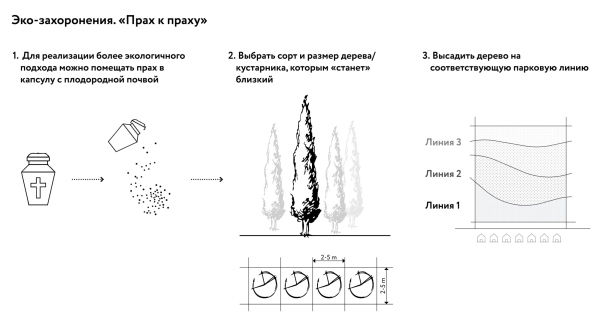 Eco-burial scheme: "ashes to ashes«. »Quiet Neighbors" WorkshopCopyright: Materials of the workshop of the “Open City Festival”, curated by the Genplan Institute of Moscow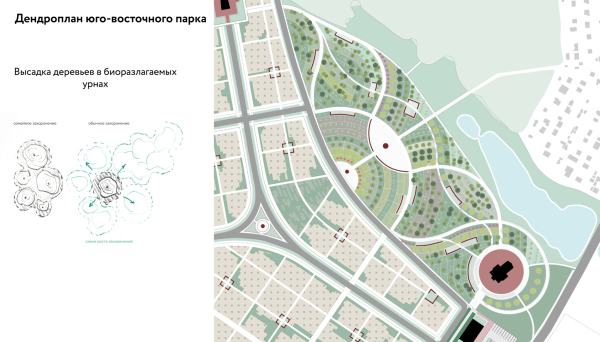 Southeast Park Dendroplan. Quiet Neighbors WorkshopCopyright: Materials of the workshop of the “Open City Festival”, curated by the Genplan Institute of Moscow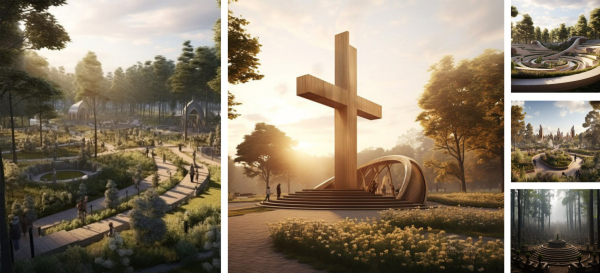 Searching for the image of an eco-cemetery. Quiet Neighbors WorkshopCopyright: Materials of the workshop of the “Open City Festival”, curated by the Genplan Institute of Moscow Transportation and Pedestrian Network. Quiet Neighbors WorkshopCopyright: Materials of the workshop of the “Open City Festival”, curated by the Genplan Institute of Moscow The master plan. “Quiet Neighbors” WorkshopCopyright: Materials of the workshop of the “Open City Festival”, curated by the Genplan Institute of Moscow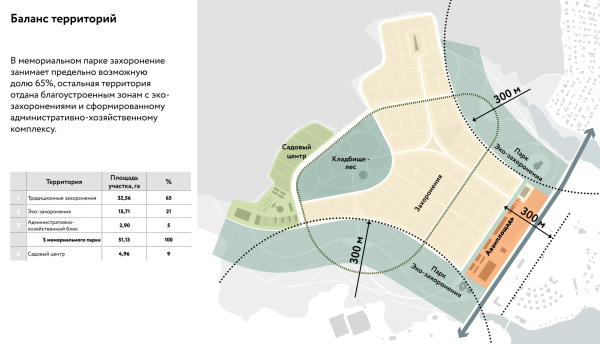 The territory balance. “Quiet Neighbors” WorkshopCopyright: Materials of the workshop of the “Open City Festival”, curated by the Genplan Institute of MoscowIn addition to this original but, in my opinion, attractive solution, everything else is well thought out: a front square with a retail space, a plant nursery garden, and a rather charming, not gloomy, crematorium building. It subtly resembles the Montreal Pavilion, but perhaps, in this case, the rising spire can be associated with the soul’s journey to the sky. 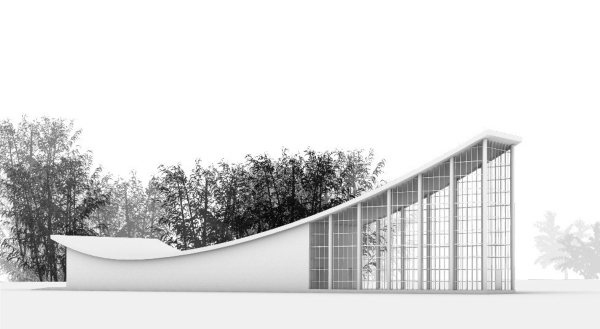 The crematorium. “Quiet Neighbors” WorkshopCopyright: Materials of the workshop of the “Open City Festival”, curated by the Genplan Institute of Moscow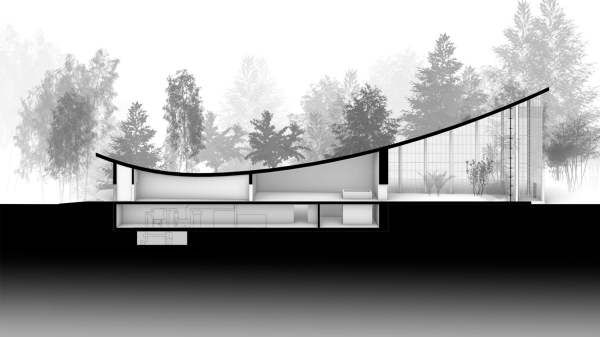 Crematorium. Cross section view. Quiet Neighbors WorkshopCopyright: Materials of the workshop of the “Open City Festival”, curated by the Genplan Institute of Moscow Crematorium Plan at 0 elevation. “Quiet Neighbors” WorkshopCopyright: Materials of the workshop of the “Open City Festival”, curated by the Genplan Institute of Moscow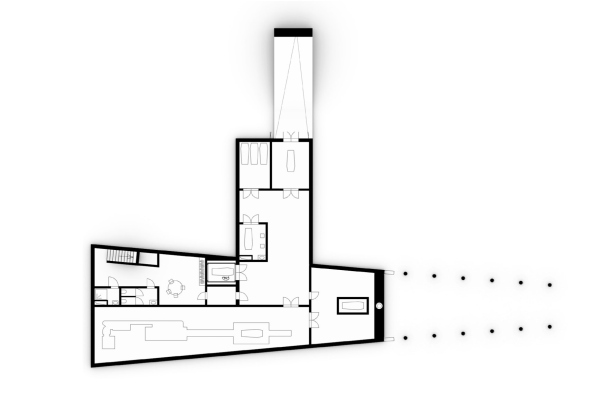 Crematorium Plan at 4.0 elevation. “Quiet Neighbors” WorkshopCopyright: Materials of the workshop of the “Open City Festival”, curated by the Genplan Institute of Moscow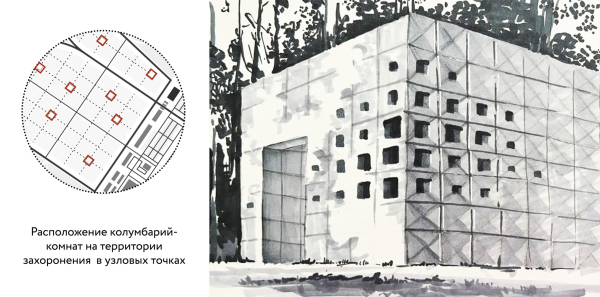 Columbarium Rooms. Quiet Neighbors WorkshopCopyright: Materials of the workshop of the “Open City Festival”, curated by the Genplan Institute of MoscowMoving with Your Relative The second proposal is more conceptual, falling into the category of “paper” projects and is intended for the densely built historical center. It is called – by analogy with a well-known program – “My Columbarium”. The authors suggest creating a network of columbariums within the city program, one for each district. They place the columbariums underground: this way, space can be saved, and, at the very least, an original atmosphere can be created – at least an oculus among the images has already appeared. Naturally, the early Christian catacombs come to mind, although the authors do not seem to refer to them. 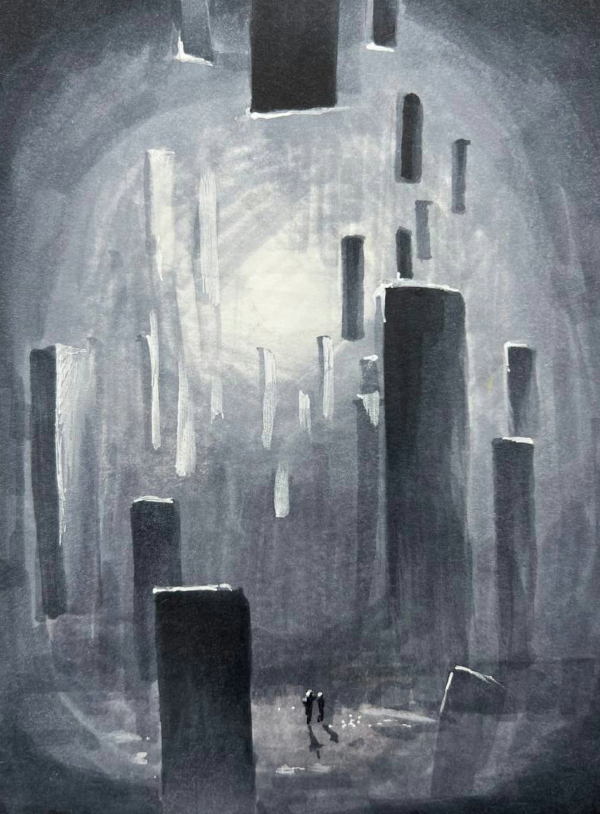 "My Columbarium«. »Quiet Neighbors" WorkshopCopyright: Materials of the workshop of the “Open City Festival”, curated by the Genplan Institute of Moscow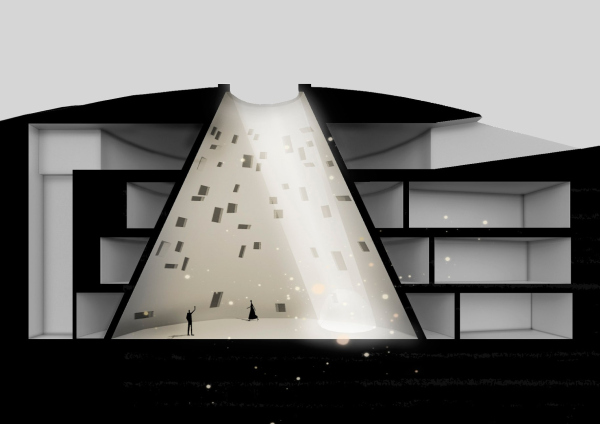 "My Columbarium«. »Quiet Neighbors" WorkshopCopyright: Materials of the workshop of the “Open City Festival”, curated by the Genplan Institute of MoscowThe main idea, however, is to make the urns mobile. So, when moving to another district, a person can take the urn with them and place it in another columbarium within the network. It turns out to be a counterpoise: cemeteries at the city borders are very stable in terms of location – a tree grows there, and it’s there forever, while cemeteries within the city are as mobile as city dwellers. And at the same time, there is a sense of attachment for a city center resident to their relative, as if they are not letting go, unlike the burial-tree. Well, urns with ashes on the mantelpieces from American movies also come to mind. Another question: all this is proposed for Moscow. What if a Muscovite decides to move to another city? However, what is truly important here is the diversity of the proposed, not entirely traditional formats, not only for Muscovites but also for Russians, corresponding to the direction of society’s development. If columbariums have found acceptance, perhaps these will someday too. Personally, I wouldn’t mind continuing my eternal life as a tree. |
|
